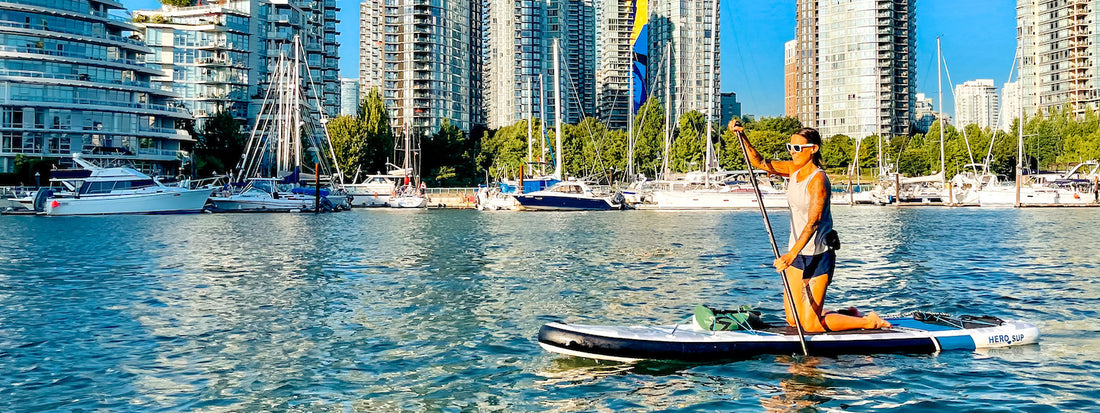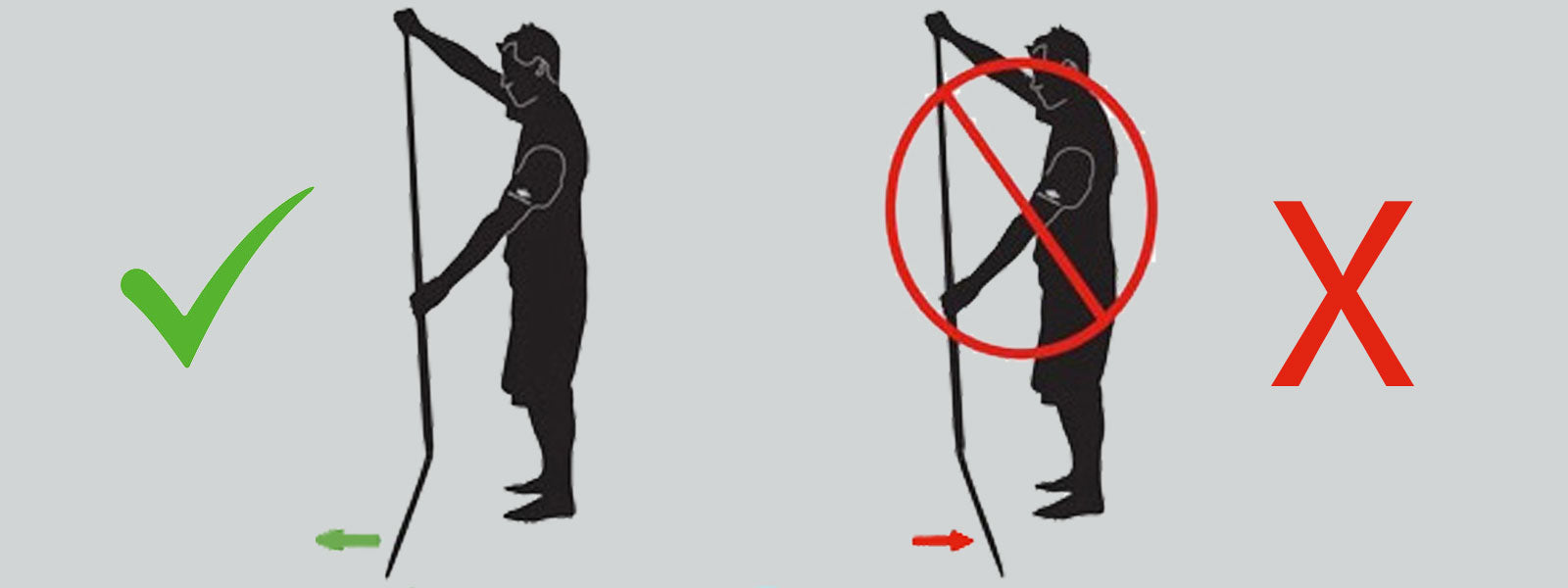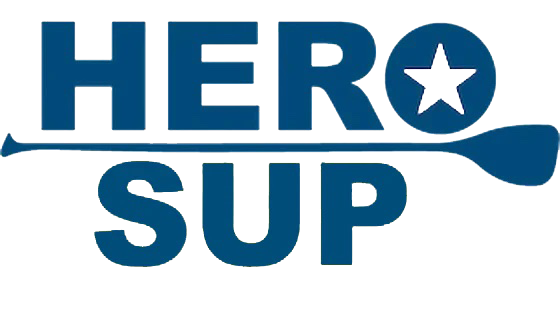
10 PRO TIPS FOR BEGINNER PADDLE BOARDERS
Share
We were all SUP newbies once and we all made very similar mistakes our first time on a paddle board.
Avoid the most common mistakes and know the basics by following these 10 important tips for beginner paddle boarders.
1. PRACTICE OUT OF THE WATER FIRST
- Knowing your board and feeling comfortable out of the water first can make a big difference.
- Inflate your paddle board (leave off the fin), set it on an even surface and practice standing up from the kneeling position.
- Get on your knees at the centre of the board with your paddle. Your knees should be shoulder width apart.
- Place your hands on the board under your shoulders.
- Look straight ahead and move one foot up on the board.
- Press your hands into the board and move your other foot up on the board and push yourself up. Your feet should be placed next to the centre carry handle shoulder width apart.
- Keep your hips facing forward and start paddling.
2. SET THE CORRECT PADDLE HEIGHT
Before getting out on the water you’ll want to make sure your paddle is set to the correct height.
As a general rule your paddle should be about 8-10” taller than you for all-around recreational paddling.
The easiest way to measure it is to stand straight with one arm lifted straight up above your head.
Place the paddle next to you with the blade on the ground next to your feet.
The handle should reach to your wrist. If you’re surfing you can lower the height of your paddle by a couple inches because you’ll have a lower stance.
3. FIND AN EASY CALM SPOT TO LAUNCH YOUR BOARD

Going out your first time in wavy choppy water is going to be tough. That’s the fastest way to get discouraged.
To build your confidence quickly launch your board from an easy spot where you can walk into the water and where the water is flat and calm.
- Walk your board into the water being careful to make sure the fin doesn’t scrape on the ground. Best way is to lift the back end of the board out of the water and push the board forward.
- Once you can safely put the back end of the board down without the fin hitting ground get onto the board in the kneeling position just like you practiced on land.
- Take a couple of paddles from the kneeling position to move the board forward.
4. START ON YOUR KNEES 
Starting on your knees is the easiest way to begin and feel comfortable.
Paddle from the kneeling position for as long as you need before standing.
Once you’re feeling brave enough to stand give it a go exactly as you practiced on land.
If you feel unsteady know that you can always go back down on your knees anytime.
5. HOLD YOUR PADDLE THE RIGHT WAY

One of the most common mistakes we see is people holding the paddle the wrong way around.
Don’t worry everyone does it! The reason this is such a common mistake is because the way you position your paddle can seem counterintuitive.
The blade should slope away from you. With the Hero SUP paddle it’s easy to tell as the logo should always be facing the front.
6. KEEP YOUR EYES ON THE HORIZON

When you first start out keep your eyes focused straight ahead towards the horizon.
If you turn your head and look around it can affect your balance. Even looking down or up can be tricky at first.
As you get more comfortable on your board this won’t be as much of an issue but initially it’s a smart move to keep your head focused straight ahead.
7. PRACTICE GETTING BACK ON YOUR BOARD FROM THE WATER
Even the most experienced paddlers end up in the water once in awhile.
Knowing that you can easily get back onto your board from deep water will help build your confidence and eliminate fear.
It’s a great idea to take a day to practice getting back on your SUP from the water.
Have fun with it and practice your shimmy technique of pulling yourself up and sliding onto your board safely.
Don’t worry very few people look graceful accomplishing this move. ;)
- From the water place your paddle on your board.
- With one hand grab the centre carry handle, sling your other arm over the board to grab the side rail furthest from your body.
- Kick your legs for some extra power and pull yourself up with both arms. Slide your body onto the board.
8. HAVE THE RIGHT SAFETY EQUIPMENT
There are two pieces of safety equipment that you should wear at all times while out paddleboarding.
1. SUP LEASH - Even when paddling in calm flat water it is important to wear your SUP leash.
The leash will ensure that your board is never swept away from you if you fall in and that you are never more than a few feet away from your board.
2. PFD - Always wear your PFD. Although it is not mandatory to “wear” a lifejacket in surfing, swimming or bathing areas, you do have to have one with you.
There have been far too many SUP drowning accidents (even in calm water) that could have been avoided if the paddler was wearing a lifejacket.
Have fun but be safe. Play it smart and wear your PFD at all times while on the water.
9. TAKE WAVES HEAD ON
If you’re paddling on choppy water or dealing with wake from boats the easiest way to stay on your board is to take the waves head on.
If the waves hit you from the side you are likely going to topple in, especially if you are new to paddle boarding.
By turning your board so that the nose of your SUP hits the waves first you will have a better chance of riding over and through them instead of being hit from the side.
10. PADDLE WITH YOUR CORE
Getting used to paddling with your core right away will help ensure that your paddling technique is as efficient as possible.
By powering forward with your core instead of just with your arms and shoulders you will get a more powerful stroke and also have less arm fatigue.
While this can be difficult to focus on your first few times out you’ll want to practice powering forward with your core sooner than later.
When you place your paddle in the water for the forward stroke, use your core to pull the paddle back towards you.
To get the feel you might want to practice on land first and then move on to shallow water.
Eventually it will become second nature and you’ll find that not only will your body get stronger and stronger but your paddling strokes will get more powerful and more efficient as well.
PRACTICE MAKES PERFECT

As the old saying goes practice truly makes perfect when it comes to paddle boarding.
The more you get out there and practice the faster your skills will improve, your balance will get better and your confidence will grow stronger.
Eventually you might find yourself starting to notice other paddle boarders who might be holding their paddle wrong or using the wrong technique. Maybe you'll even offer them a friendly tip or two to help them out.
The point is with practice you'll improve quickly, be far more efficient on the water and feel more comfortable in different situations while on your board.
Most importantly remember to have a great time out there, after all stand up paddle boarding is meant to be relaxing and FUN!
BEGINNER SUP'S
Still looking for a good stable board to get started on?
The right board can make all the difference in how enjoyable your paddling experience is.
Check out our selection of inflatable paddle boards. Our Crusader iSUP and Hybrid Crusader iSUP boards have been very popular with beginner paddlers.
